- Home
- William Shakespeare
Cymbeline Page 2
Cymbeline Read online
Page 2
Traditionally, the play’s three main plots have been identified as the marriage/wager plot (involving Innogen’s marriage to Posthumus, his resultant banishment, Cloten’s attempted “revenge,” and the wager Posthumus makes with Iachimo over Innogen’s fidelity), the dynastic plot (involving the return of Guiderius and Arviragus, Cymbeline’s long-lost sons, and, unbeknownst to them, the future rulers of Britain), and the nations plot (involving the Roman invasion of Britain over Cymbeline’s refusal to pay the required tribute, and the eventual reunion of the two powers). Critical concerns have recently engaged with each of these elements and debated the politics of the play in terms of gender and state and the interplay between them.
THE WAGER PLOT
The wager story had its roots in popular folklore, narrated many times in the medieval period, though Shakespeare seems to have based his plot on a version in Boccaccio’s Decameron (Day 2, Novella 9), in which:
The villain, Ambrogiuolo, gets into Ginevra’s bedchamber in a chest and steals a ring, a purse, a girdle and a gown. Bernabò, the husband, is convinced, not by these, but by the description of a mole with golden hairs under his wife’s left breast. He orders a servant to kill Ginevra, but the servant helps her to escape in male clothes.5
Many nineteenth- and early twentieth-century critics chose to take sides over the wager plot, and to make moral judgments upon the action. For a long time Innogen was seen as an ideal portrait of womanhood and wifely virtue:
in Imogen we have an embodiment of the highest possible characteristics of womanhood—untainted health of soul, unshaken fortitude, constancy that withstands all trials, inexhaustible forbearance, unclouded intelligence, love that never wavers, and unquenchable radiance of spirit.6
Unsurprisingly, many critics denounced Posthumus:
The wrong of Posthumus is the commonest of moral perversions, the false sense of honour that dares not refuse a challenge, whatever the moral cost implied in its acceptance, it is the perversion which is the product of social narrowness and artificiality; the duellist dreads the sentiment immediately surrounding him in the coterie that has dubbed itself “men of honour,” and forgets the great world with its balanced judgements and eternal principles of right.7
More recently, masculine anxieties and a male-driven culture of commodity have also been seen as driving the wager. Twentieth-century feminist criticism was especially interested in the socially constructed “virgin/whore” binary that women are fetishistically bracketed into by men, and the wager plot can be seen as a literal playing out of this, with the two men betting over Innogen’s chastity. Her sexual purity has been interpreted as prudery, and, paradoxically, the very thing that makes her an object of sexual desire. Rather than the moral touchstone or untouchable object of desire that towers above the other characters in the play, Innogen has also been seen as marginal to the male relationships in the play, subjugated by a domineering, insecure, and oppressive patriarchy: “Innogen begins the play as its primary defining figure, defining herself, her husband, and the dramatic focus of the audience; by the end, she has learnt her place.”8 In psychoanalytic critic Janet Adelman’s formulation, the play’s “happy ending” is seen as “radically contingent” on Innogen’s “self-loss, on the ascendancy of male authority and the circumscription of the female … the unmaking of female authority, the curtailing of female pride, as much for Imogen as for the wicked queen.”9
Although we know Iachimo is lying about sleeping with Innogen, critics have argued for a kind of sexual conquest in the “trunk” scene, and this violation has also been seen as a metaphorical playing out of one of the play’s other plots:
In this context, Giacomo’s [modernized spelling of Iachimo’s] intrusion into Innogen’s bedroom becomes itself a tale of a British “haven” infiltrated by scurrilous foreign forces. His secret incursion becomes an enemy “voyage upon her,” its invasive metaphors speak of assaulting the “walls” of Innogen’s honour, the “temples” of her mind.10
THE DYNASTIC PLOT AND THE PASTORAL MODE
Although the figures of Cymbeline’s sons, Guiderius and Arviragus, came from Holinshed’s Chronicles, Shakespeare’s source for the play’s quasi-historical narrative, the Wales plot has its roots in romances and folk stories. This part of the drama has frequently been seen to share in the conventions of pastoral: “In common with a number of his other plays from As You Like It, via King Lear to The Tempest, Shakespeare’s Cymbeline uses an excursion to a wilderness setting so that characters can return to their normal lives and roles, refreshed and, to an extent, sorted.”11 The pastoral environment has been seen as shaping the princes and providing them with an earthy, simple model of morality they can apply to courtly life on their return:
The fine young men, schooled to endurance by their teacher and their habitat, take their places among the other courtiers naturally enough, their youthful discipline offering the promise that Cymbeline’s kingdom will be reorganized on new and different moral lines. Nature has raised these boys so that they can return to a birthright compromised in their absence and purify it by the simple strengths of their natural characters.12
A more recent critic has argued conversely that:
Cymbeline is innovative because it dares to follow the characters home and suggests that their moral transformation may not last … What marks the boys’ nobility out as far as Belarius is concerned is their ability to imagine themselves into his heroic stories, to occupy another world that they have never personally known. Ironically, however, this imaginative understanding of the “other” is merely a restitution of the unexamined heroic but also brutal values that caused Belarius to flee in the first place.13
The culmination of the fictitious pastoral and the play’s move back into history, where the princes can become kings, as well as the mixing of plots and genres, has been brilliantly described by the critic Robert Henke:
Belarius recognizes that the arrival and killing of Cloten spell the beginning and the end of his protected, pastoral theatre and initiates the move back into history … The killing of Cloten initiates a more active interplay between pastoral and history than that effected by Belarius’s cave stories. Violence inappropriate to the pastoral decorum invades its boundaries—although the displacement of violence offstage adjusts the levels of violence in a manner appropriate to a tragicomic decorum. And Belarius realizes that as an uncanny messenger, Cloten is an earnest of further negotiations with the court. As “pastoral-historical,” Cymbeline aims to join the “lopp’d branches” to the “old stock” of the “stately cedar”: to graft the pastoral denizens Guiderius and Belarius back onto the British dynastic tree.14
KING OF BRITAIN
A number of critics have emphasized the play’s roots in fairy tale. Northrop Frye, one of the most influential critics of the twentieth century, saw the play as unhistorical, and its fairy-tale elements as defining:
Cymbeline is not, to put it mildly, a historical play: it is pure folk tale, featuring a cruel stepmother with her loutish son, a calumniated maiden, lost princes brought up in a cave by a foster father, a ring of recognition that works in reverse, villains displaying false trophies of adultery and faithful servants displaying equally false trophies of murder, along with a great firework display of dreams, prophecies, signs, portents, and wonders.15
Much recent criticism, however, has focused on the play’s politics in the widest sense, on the play’s treatment of Rome as well as its evocation of British nationhood. J. P. Brockbank adjudged the accounts of Holinshed to be “consonant” with the adventures of Brute, founder of the British nation according to Geoffrey of Monmouth, and noted that Shakespeare’s dovetailing of sources creates a magical, principally theatrical, yet brilliantly researched historical narrative:
Shakespeare’s reading offers a paradigm for an action which makes the reconciliation with Rome a high event in the magical movement of British history from the vision of Brute to the golden prospect of the vision of Cadwallade
r … but he had scope still to exercise his imagination on other elements in the chronicle. In pursuit of that “odd and distinctive music” he chose to modulate from the Brutan into the Roman key and from the Roman into the Renaissance Italian.16
Earlier in the twentieth century, G. Wilson Knight had seen the play as dramatizing the passing of the baton from Rome to what would become England, which could be read in terms of the neoclassical world of the Renaissance taking up—in no small part through Shakespeare’s art—the torch of the classical world:
Certainly we are to feel the Roman power vanishing into the golden skies of a Britain destined to prove worthy of her Roman tutelage. Jupiter’s blessing on Posthumus’ marriage and the soothsayer’s vision thus make similar statements. Both symbolise a certain transference of virtue from Rome to Britain. Shakespeare’s two national faiths are here married; his creative faith in ancient Rome, felt in the dramas from Titus Andronicus to Coriolanus, and his faith in England.17
Other critics felt the union between the two nations, based on mutual respect, rather than the supersession of one over the other, was key:
I find it difficult to accept [G. Wilson] Knight’s idea of Britain taking over from Rome. Iachimo is a corrupt Roman and he repents. Cloten is a villainous Briton and he is killed. Although there can be no doubt that some in the Jacobean audience would indeed see themselves as the successors of Rome, the play is not talking about the succession of empires but about the only true form of empire, which is when vassalage is removed, and union is a contract freely entered into.18
Gendering has also been identified as central to the Roman thread of the play, leading to the banishment of the Queen—who stands in defiant vocal opposition to Rome—from the final act: “powerful and rebellious females in native historiography threatened the establishment of a stable, masculine identity for the early modern state.”19 This gendering of nations has had a powerful hold on recent interpretations, including application of a “parthenogenesis” theory, which argued for Cymbeline’s desire to expunge the female from his world; not only his wife, the wicked Queen, but also the memory of the mother of his sons, and ultimately find union with the male world of Rome (also used to explain the play’s perceived structural problems):
In Cymbeline, a plot ostensibly about the recovery of trust in woman and the renewal of marriage is circumscribed by a plot in which distrust of women is the great lesson to be learned and in which male autonomy depends upon the dissolution of marriage. Moreover, the effect of the Imogen-Posthumus plot is everywhere qualified by the effect of the Cymbeline plot, and the two plots seem to be emotionally at cross-purposes: if one moves toward the resumption of heterosexual bonds in marriage, the other moves toward the renewed formation of male bonds as Cymbeline regains both his sons and his earlier alliance with an all-male Rome, the alliance functionally disrupted by his wife. Hence the emotional incoherence of the last scene: the resolution of each plot interrupts the other, leaving neither satisfactorily resolved.20
The scholar Robert S. Miola has argued that the play’s treatment of Rome veers in and out of, and ultimately rejects, the social and behavioral codes Shakespeare had worked so carefully to delineate in his previous, less fantastical, Roman plays:
Cymbeline’s loose aggregation of miniatures combines to portray a Rome that gradually yields to Britain. The chaste Roman matron Lucrece finally gives way to Imogen, the British maiden for whom honour and reputation are idle impositions, oft lost without deserving. Comic flexibility, evident in Posthumus as well as in Imogen, succeeds tragic constancy as austere Romanitas dissolves into historical-pastoral romance.21
Politically self-conscious critic Terence Hawkes, meanwhile, focuses on the significance of Wales in the play’s various articulations of nationhood:
After all, any future “mixing” of Roman and British ways of life is surely implicitly to be modelled on and judged by the success or otherwise of the prior mixing of the cultures of Wales and England. This, evidently, is the point the Welsh setting seeks to affirm. And that raises a major difficulty in Cymbeline. Assertions of an achieved Britishness certainly abound … But where are the Welsh? Even though two-thirds of the play is set in Wales, we meet no native-born Welsh people there—unless we count the two “beggars” of whom Innogen asks directions [3.6.8–9]. Their status may be significant.22
There has also been an interest in seeing the play as a Jacobean panegyric, and many commentators have felt that it is utterly confusing until placed in the context of the historical circumstances of James I’s reign:
Cymbeline (in Shakespeare, though not in Holinshed) has one daughter and two sons; so did James I. James’s elder son, Henry, was created Prince of Wales in 1610, and some editors point to 1610 as a likely date for Cymbeline; and in connexion with the stress on peace with which the play closes, it is perhaps of interest that 1610 was the only year, of this period, in which all the European states were at peace. Lastly, Cymbeline’s final submission to Rome, even after he has won the war against the Romans, might have had some topical value in view of James’s efforts to enter into friendly negotiations with Papal Rome … the audience must have made a complex identification: the peace is both the peace of the world at the time of Christ’s birth, in which Britain participates, and also its attempted re-creation at the very time of the play’s performance, with Jacobus Pacificus—who was a figure of Augustus—on the throne.23
In the politically devolved Britain of the twenty-first century, G. Wilson Knight’s slippage, in the passage quoted earlier, from “England” to “Britain” looks sloppy. And it certainly would not have made sense to Shakespeare and his original audiences, for whom 1603 was a turning point, as Queen Elizabeth of England was succeeded by King James VI of Scotland and I of England, with his project to unite the two nations into a new “Britain.”
In summary, then: as well as being a pastoral fantasy and a fairy story, complete with wicked stepmother and poison (which, thanks to an honest-hearted physician, turns out to be mere sleeping potion), Cymbeline is a play about the Romans in Britain, under the auspices of the god Jupiter. The title in the Folio contents list is “Cymbeline King of Britain.” Shakespeare’s other King of Britain was Lear, who made the mistake of dividing his kingdom in three. Cymbeline may have been placed among the tragedies by the editors of the Folio because it traverses the same elevated ground of national history and destiny. But whereas the disarray of the divided nation in Lear is a negative example, perhaps intended to make the play’s original audience feel relief that King James had recently united the thrones of Scotland and England, the resolution of Cymbeline is altogether positive: “Never was a war did cease, / Ere bloody hands were washed, with such a peace.”
Cymbeline was supposed to have been king of Britain in the year when Christ was born; at that time, the Roman emperor was Augustus. Shakespeare’s audience would have known that Augustus was the Caesar to whom Cymbeline agrees to pay tribute money, despite the miraculous victory of the British when Belarius, Guiderius, and Arviragus (otherwise known as Morgan, Polydore, and Cadwal) hold the road against apparently insurmountable odds. The end of the play heralds an “Augustan peace,” in which Britain is imagined as the equal of Rome. Milford Haven in Wales is a vital location and point of reference in the play. The more historically and politically literate members of Shakespeare’s original audience would have recalled that it was the port where Henry Tudor—the Richmond of Richard III and the future King Henry VII—landed in 1485, the year that brought the Wars of the Roses to an end and established the Tudor dynasty that turned the tables on modern Rome and began to establish an image of their nation as the divinely chosen Christian successor-empire to that of Augustus.
Imagine King James watching the play: he would have seen himself as a composite version of Cymbeline and Augustus, both a British king and a neo-Roman emperor. From the point of view of characterization, the part of King Cymbeline is astonishingly underwritten. His interior life is n
ever opened to us, as is that of Lear or, in this play, Princess Innogen. All he seems to do in the long closing scene is ask questions, express amazement, and pronounce benediction. This makes sense if he is intended to offer an oblique representation of James, King of Britain. It would not do to inquire too closely into the monarch’s interior life. Instead, Cymbeline is the ideal spectator: during a court performance, the King would have been sitting at the focal point of the hall. In a production that works, his amazement, his questions, and his acceptance are also ours.
ABOUT THE TEXT
Shakespeare endures through history. He illuminates later times as well as his own. He helps us to understand the human condition. But he cannot do this without a good text of the plays. Without editions there would be no Shakespeare. That is why every twenty years or so throughout the last three centuries there has been a major new edition of his complete works. One aspect of editing is the process of keeping the texts up to date—modernizing the spelling, punctuation, and typography (though not, of course, the actual words), providing explanatory notes in the light of changing educational practices (a generation ago, most of Shakespeare’s classical and biblical allusions could be assumed to be generally understood, but now they can’t).
Because Shakespeare did not personally oversee the publication of his plays, with some plays there are major editorial difficulties. Decisions have to be made as to the relative authority of the early printed editions, the pocket format “Quartos” published in Shakespeare’s lifetime, and the elaborately produced “First Folio” text of 1623, the original “Complete Works” prepared for the press after his death by Shakespeare’s fellow actors, the people who knew the plays better than anyone else. Cymbeline exists only in a Folio text that is reasonably well printed, with few errors, and showing signs—especially in its heavy punctuation—of being set from copy prepared by a scribe, who was probably Ralph Crane. The following notes highlight various aspects of the editorial process and indicate conventions used in the text of this edition:

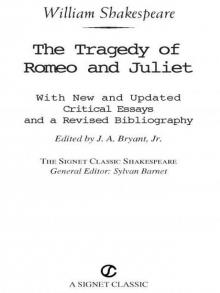 Romeo and Juliet
Romeo and Juliet As You Like It (Folger Shakespeare Library)
As You Like It (Folger Shakespeare Library) Hamlet
Hamlet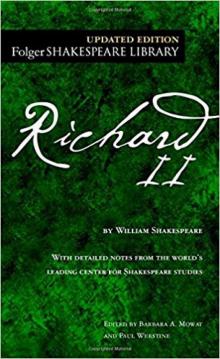 Richard II (Folger Shakespeare Library)
Richard II (Folger Shakespeare Library)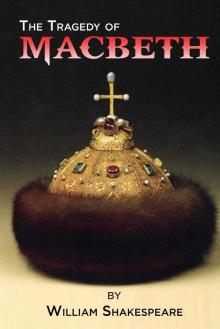 Macbeth
Macbeth Henry V
Henry V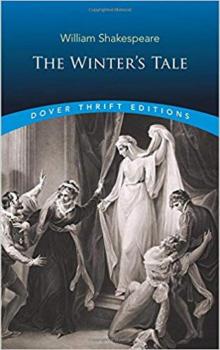 The Winter's Tale
The Winter's Tale The Taming of the Shrew
The Taming of the Shrew The Comedy of Errors
The Comedy of Errors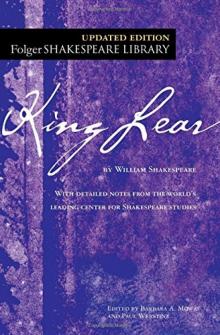 King Lear (Folger Shakespeare Library)
King Lear (Folger Shakespeare Library)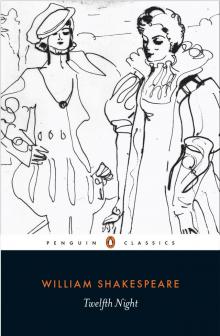 Twelfth Night
Twelfth Night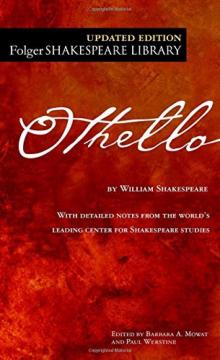 Othello
Othello The Two Gentlemen of Verona
The Two Gentlemen of Verona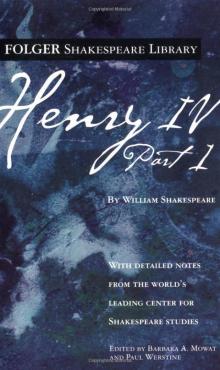 Henry IV, Part 1 (Folger Shakespeare Library)
Henry IV, Part 1 (Folger Shakespeare Library)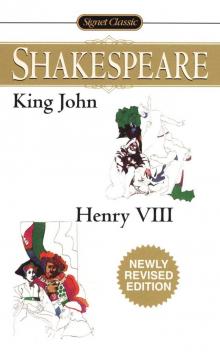 King John/Henry VIII (Signet Classics)
King John/Henry VIII (Signet Classics) The Tempest
The Tempest Titus Andronicus (Dover Publications)
Titus Andronicus (Dover Publications)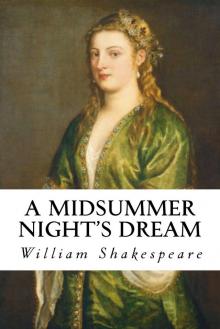 A Midsummer Night's Dream
A Midsummer Night's Dream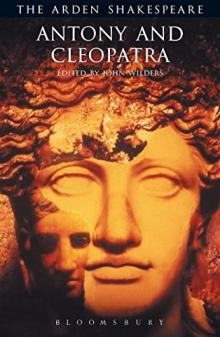 Antony and Cleopatra (Arden Shakespeare: Third Series)
Antony and Cleopatra (Arden Shakespeare: Third Series) The Oxford Shakespeare: Henry IV, Part 2 (Oxford World's Classics)
The Oxford Shakespeare: Henry IV, Part 2 (Oxford World's Classics)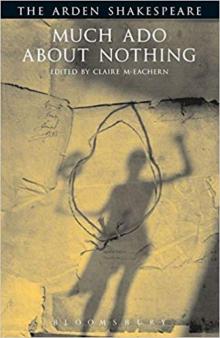 Much Ado About Nothing (Arden Shakespeare: Third Series)
Much Ado About Nothing (Arden Shakespeare: Third Series) All's Well That Ends Well
All's Well That Ends Well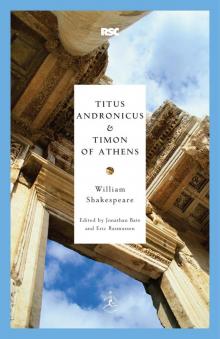 Titus Andronicus & Timon of Athens
Titus Andronicus & Timon of Athens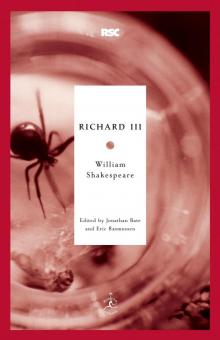 Richard III (Modern Library Classics)
Richard III (Modern Library Classics) Coriolanus
Coriolanus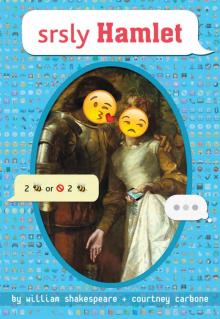 srsly Hamlet (OMG Shakespeare)
srsly Hamlet (OMG Shakespeare)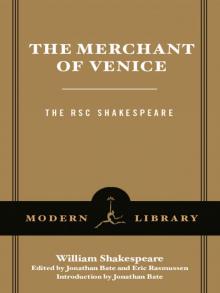 The Merchant of Venice
The Merchant of Venice Richard III
Richard III Richard II
Richard II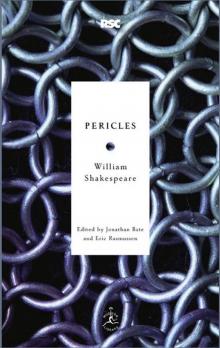 Pericles
Pericles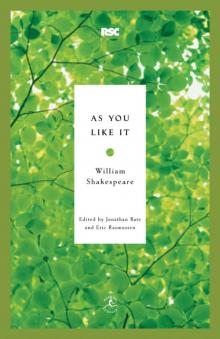 As You Like It
As You Like It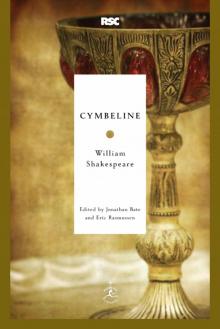 Cymbeline
Cymbeline Alls Wel that ends Well
Alls Wel that ends Well YOLO Juliet
YOLO Juliet A Midsummer Night #nofilter
A Midsummer Night #nofilter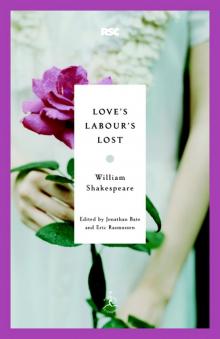 Love's Labour's Lost
Love's Labour's Lost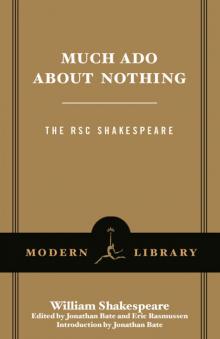 Much Ado About Nothing
Much Ado About Nothing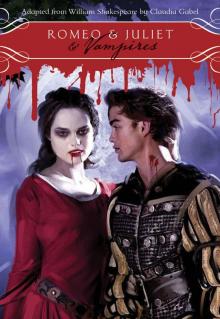 Romeo & Juliet & Vampires
Romeo & Juliet & Vampires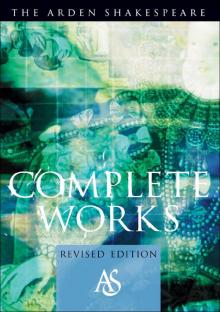 The Arden Shakespeare Complete Works
The Arden Shakespeare Complete Works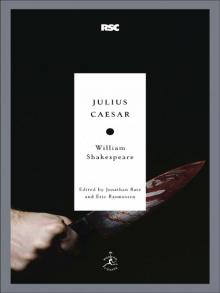 Julius Caesar
Julius Caesar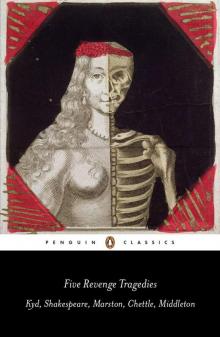 Five Revenge Tragedies: The Spanish Tragedy, Hamlet, Antonio's Revenge, The Tragedy of Hoffman, The Revenger's Tragedy (Penguin Classics)
Five Revenge Tragedies: The Spanish Tragedy, Hamlet, Antonio's Revenge, The Tragedy of Hoffman, The Revenger's Tragedy (Penguin Classics)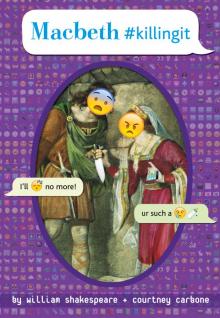 Macbeth #killingit
Macbeth #killingit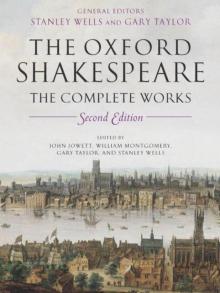 The Oxford Shakespeare: The Complete Works
The Oxford Shakespeare: The Complete Works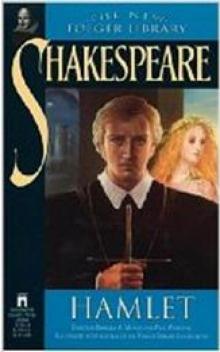 Hamlet, Prince of Denmark (Collins edition)
Hamlet, Prince of Denmark (Collins edition)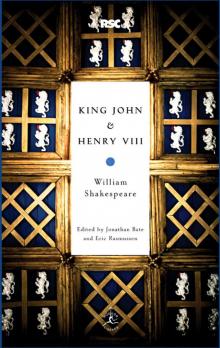 King John & Henry VIII
King John & Henry VIII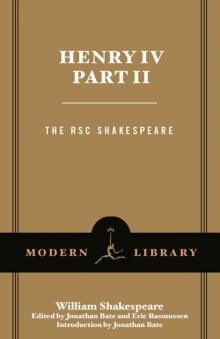 Henry IV, Part 2
Henry IV, Part 2 Complete Plays, The
Complete Plays, The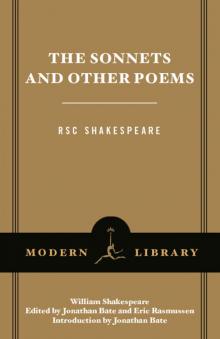 The Sonnets and Other Poems
The Sonnets and Other Poems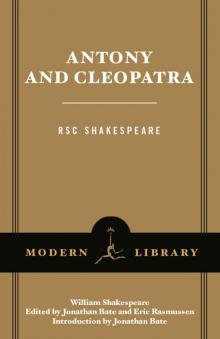 Antony and Cleopatra
Antony and Cleopatra Henry IV, Part 1
Henry IV, Part 1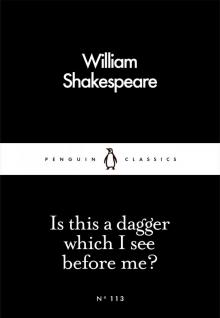 Is This a Dagger Which I See Before Me?
Is This a Dagger Which I See Before Me? The Complete Works of William Shakespeare In Plain and Simple English (Translated)
The Complete Works of William Shakespeare In Plain and Simple English (Translated) The Sonnets
The Sonnets